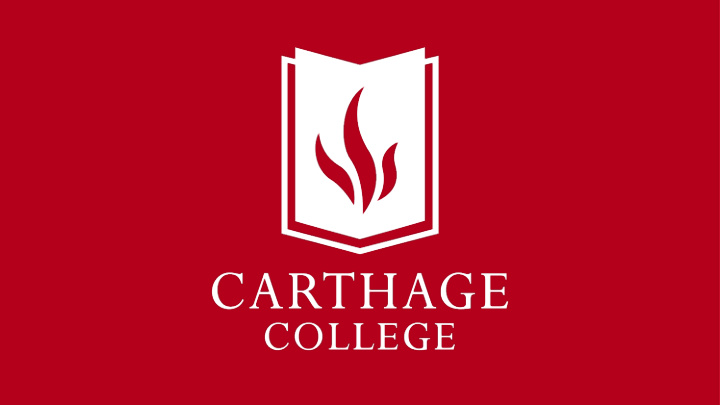



ABOUT CARTHAGE ~2,600 FT Undergrads, 400 PT/Grad, 70% residential >50 Academic majors, minors, concentrations Midway between Chicago and Milwaukee Emphasis on experiential learning Affiliated with ELCA ~17% Students of Color
Increasing racial/ethnic diversity of student body
Fall 2016 Entering Class Identity • 1.1% American Indian (2015: 0.40%) • 3.0% Asian (2015: 3.19%) • 7.2% Black / Non-Hispanic (2015: 5.59%) • 13.2% Hispanic (2015: 5.32%) • 3.1% Other (2015: 3.72%) • 62.3% White / Non-Hispanic (2015: 76.20%) • 10.1% Unreported (2015: 5.59%) • 10 % more first generation students than ever • 8% more Pell-eligible students than ever before before
Equity Gap: Graduation Rate Data from IPEDS
Promoting Student Success Mind the Gaps • Refined data practice and Tableau-based reporting on student success measures • Strategic Retention Committee – Data Analysis – Developing institutional responses that promote success (not deficit thinking) – Strategic interventions for underserved students • Student Success Team • Fostering Belonging
All College Meeting – September 2016 Presentation and Workshop "Promoting Student Success by Fostering Belonging” “Becoming Cultural Navigators: Strategies for Fostering First Year Student Belonging and Success” Dr. Terrell L. Strayhorn Director of the Center for Higher Education Enterprise at The Ohio State University https://www.youtube.com/watch?v=-PICDwC_Fzw&feature=youtu.be
From Diversity to Equity and Inclusion • Director of Equity and Inclusion appointed (Summer 2016) • Equity and Inclusion Committee launched (Fall 2016) • Four communities of practice established to focus on: Equity and Access; Campus Climate; Diversity in the Curriculum; Student/Faculty Learning and Development • Equity Scorecard • Campus Climate Survey for Faculty/Staff to parallel student climate survey last conducted in Spring 2015
Increasing Access to and Participation in High Impact Practices • Experiential Learning Task Force – Focused on several High Impact Practices (HIPs) – Charged with assessing access to and participation in experiential learning for diverse student populations – Developing strategies to increase participation • J-Term Course Development for First Year Students
Access to and Participation in HIPs: J-Term • 4-1-4 Academic Calendar • Unique opportunities in J-Term • J-Term required for First Year Students • Developing experimental FY Only J-term courses that are HIP-rich to increase engagement of FY students • Faculty development for FY J-Term instructors
Achievement of Student Learning Outcomes • Revised Institutional Student Learning 1. text Outcomes (ISLOs) adopted in Spring 2015 • ISLOs align well with LEAP Essential Learning Outcomes • Developed rubric for assessing learning in required First Year courses in Western Heritage • Disaggregating results to identify new support opportunities
Rubric-based Assessment of Student Learning in FY Western Heritage Courses
Rubric-based Assessment of Student Learning in Western Heritage Course
Completion with a Purpose • Focus on vocation – NetVUE Grant – College Success Seminar – First Year Advising • General Education Task Force • Experimental J-Term Courses
Conclusions/Acknowledgments Strategies for Success Thanks for support • Coupling work to other • Tia McNair and staff institutional initiatives • AAC&U • Fostering a broad, • Center for Urban Education collaborative conversation • USA Funds • Learning from experience • Great Lakes Higher of other campuses Education Corporation
Recommend
More recommend